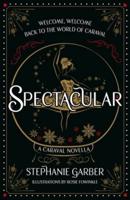Publisher's Synopsis
Excerpt from Collected Papers of Oliver Cummings Farrington, Ph. D., 1899-1901, Vol. 1
It will be seen that in form and proportional measurements the fossil egg resembles most closely that taken as the type of the Anat idae. The probability of its parent belonging to that family is also increased when one considers the nature of the formation in which the egg was found. This is of lacustrine origin, and birds of this family are well known to frequent the waters of lakes. Unfortunately, from the manner in which the egg was found. It cannot be stated positively that it came from the beds immediately adjacent. These are of White River age, but as the specimen was not found in ritu it may of course have come from later and higher beds, or, as has been suggested, be even an egg of a comparatively modern bird. Yet the probabilities are strongly in favor of the supposition that the specimen was, until just before it was found, imbedded in the formation immediately adjacent, and was brought to light by erosion, just as bones of extinct vertebrates are continually being exposed in the same region at the present time. If these suppositions are correct, the specimen affords evidence of the existence of birds of the order Anatidae in Early Miocene times.
About the Publisher
Forgotten Books publishes hundreds of thousands of rare and classic books. Find more at www.forgottenbooks.com
This book is a reproduction of an important historical work. Forgotten Books uses state-of-the-art technology to digitally reconstruct the work, preserving the original format whilst repairing imperfections present in the aged copy. In rare cases, an imperfection in the original, such as a blemish or missing page, may be replicated in our edition. We do, however, repair the vast majority of imperfections successfully; any imperfections that remain are intentionally left to preserve the state of such historical works.



























